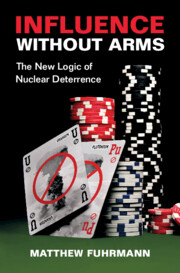Book contents
- Frontmatter
- Contents
- Acknowledgments
- Introduction
- 1 The Logic of Latent Nuclear Deterrence
- 2 What Leaders Think: Beliefs about Latent Deterrence
- 3 Almost Nuclear: Identifying Latent Nuclear Powers
- 4 Causes of Nuclear Latency: Why Technology Spreads
- 5 Reaping Rewards: Deterring Conflict and Gaining Influence
- 6 Backlash: Explaining Preventive Attacks
- 7 Arms Races: Deterring Weapons Proliferation
- 8 Nuclear Latency in World Politics
- References
- Index
6 - Backlash: Explaining Preventive Attacks
Published online by Cambridge University Press: 31 October 2024
- Frontmatter
- Contents
- Acknowledgments
- Introduction
- 1 The Logic of Latent Nuclear Deterrence
- 2 What Leaders Think: Beliefs about Latent Deterrence
- 3 Almost Nuclear: Identifying Latent Nuclear Powers
- 4 Causes of Nuclear Latency: Why Technology Spreads
- 5 Reaping Rewards: Deterring Conflict and Gaining Influence
- 6 Backlash: Explaining Preventive Attacks
- 7 Arms Races: Deterring Weapons Proliferation
- 8 Nuclear Latency in World Politics
- References
- Index
Summary
This chapter analyzes the history of preventive attacks against nuclear programs. It identifies when nuclear latency invites military conflict. It includes four detailed case studies: US-considered use of military force against Iran, the North Korea Nuclear Crisis, Israel’s preventive strike against Syria, and the US-considered use of force against Syria.
- Type
- Chapter
- Information
- Influence without ArmsThe New Logic of Nuclear Deterrence, pp. 194 - 241Publisher: Cambridge University PressPrint publication year: 2024

